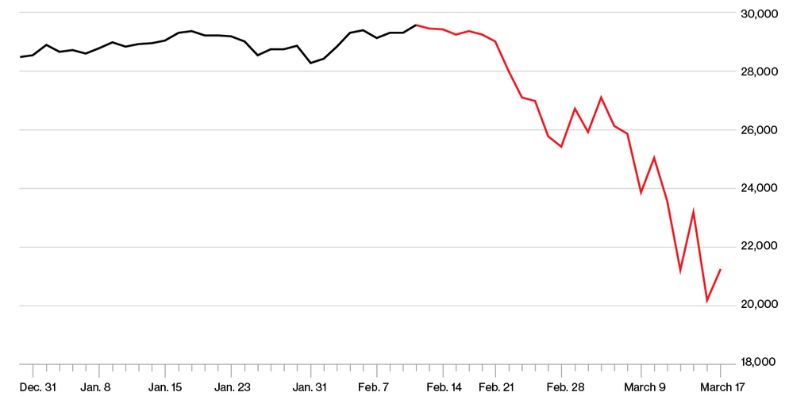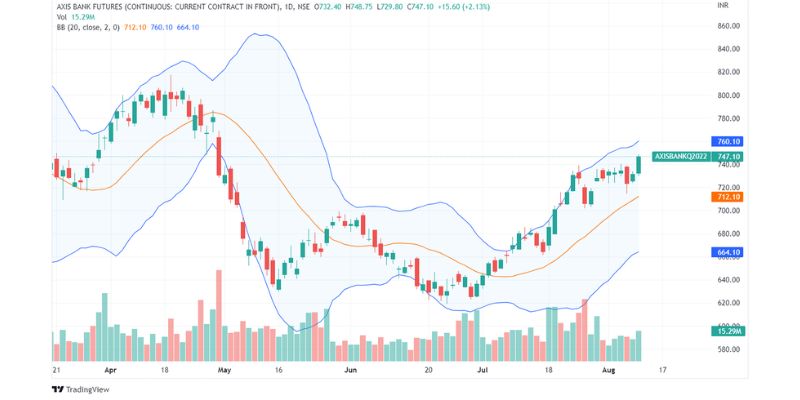Technical analysis strategies for day trading are your ticket to mastering the markets. Do charts and numbers make your heart race? Are you after the thrill of quick wins in day trading? Then you need tactics that work. I dive deep into the patterns and indicators that tell the hidden stories of the market. My proven tips help you read the signs and make smart moves. You can spot trends, nail entry points, and sail through the chaos with confidence. Let’s unlock the power of technical analysis and make those strategies your secret weapon for successful day trading.
Understanding Chart Patterns and Candlestick Formations in Day Trading
Decoding Popular Chart Patterns for Effective Trade Entry
Chart patterns are like a secret code. They tell us where the price might head next. There are several types, but let’s chat about a few. The ‘head and shoulders’ shows a trend flip. It’s spotted by three peaks, and can signal sell. On the flip side, the ‘inverse head and shoulders’ can suggest buy.
‘Wedges’ are another. They point to a price squeeze and likely breakout. ‘Wedges’ fall or climb before a sharp move in the opposite direction. They are useful for predicting breakouts. ‘Triangles’ — symmetrical, ascending, or descending — are similar. They build tension, then pop! The price jumps or drops sharply.
Spotting these patterns can help us hop in right before the action.
The Art of Reading Candlestick Formations for Price Movement Prediction
Reading candlesticks is like understanding a market’s mood. Each candle tells a day’s story of war between buyers and sellers. A ‘bullish engulfing’ pattern can mean buyers are winning. This pattern has a small red candle followed by a big green one. It can suggest it’s time to buy.
A ‘bearish engulfing’ is just the reverse. The big red candle eats the small green one, signaling it might be time to sell. ‘Doji’ candles show a draw in the fight. They tell us the market is unsure, so we should be too.
‘The hammer’ and ‘the inverted hammer’ are about bounce back. If we see a candle with a long lower stick, we call it a hammer. It means the price might go up soon. An inverted hammer is the other way round and hints a rise might come.
Understanding candlesticks can be like having a crystal ball. They help us guess the next move in the market.
These patterns and formations are best friends for day traders. They help to make smart choices on when to jump in or out of a trade. Remember, the market talks to us through charts and candles. We just need to learn the language!
Using these patterns with practice sharpens our day trading skills fast. Combine them with other tools like the RSI or MACD indicator, and you level up. Sneak in some knowledge on support and resistance levels too. They’re like secret agents that show us hidden barriers in price moves.
Now, ready your charts and light your candlesticks. Let’s catch those price waves!
Remember, day trading is not just chance. It’s about reading the signs and making smart moves. So, take these tips, decode the market’s secrets, and trade like a pro!

Leveraging Technical Indicators for Optimal Day Trading Results
Mastering the Use of RSI and MACD for Market Sentiment Analysis
When you trade, knowing the mood of the market is key. Think of RSI and MACD as mood rings for the market. These tools help you see if traders are excited or scared. The RSI, or Relative Strength Index, tells you if stocks are bought too much or too little. A high RSI, above 70, means a stock might be overbought. It could drop soon. A low RSI, under 30, suggests a stock might be oversold. It might go up.
Now, let’s chat about the MACD, which stands for Moving Average Convergence Divergence. It’s a bit like a super-helper for seeing trends. It uses two moving lines. When they cross, it might mean the stock’s trend is changing. A cross up means things might go up, while a cross down warns they might drop.
By watching the dance between RSI and MACD lines, you can guess where the market’s heading. Yet, always check other signs too for a full picture. This balance act keeps you sharp and helps you make smarter moves.
Applying Bollinger Bands and Moving Averages to Identify Market Trends
Now, let’s dive into Bollinger Bands. Picture a rubber band around price bars. This rubber band gets tight and loose. It shows when prices might stretch too far and snap back. If the band is tight, watch out, a big price move may come. If the price pushes the band, it might mean a strong trend. But, be careful, it can also snap back.
Moving averages smooth out price noise, making trends easier to see. You got two kinds: simple and exponential. Simple averages are straight-up averages of prices. Exponential averages give more weight to new prices. They react faster to changes. You can use these as a road map for price movement. When prices are above the average, think uptrend. Below it, downtrend.
Try plotting these on your charts. When prices cross these averages, it may signal a chance to jump in or out of a trade. But remember, they don’t predict the future. They’re more like a history book, showing you patterns that often repeat.
Using these indicators together creates a powerhouse for spotting trends. They’re keys to unlocking what the market might do next. Just make sure to practice a lot. The more you use them, the better you’ll understand the tales they tell. Always combine them with a solid plan and good trade habits. That way, you can trade not just with skill, but with confidence.

Advanced Techniques: Support and Resistance, and Trend Analysis
Identifying Key Support and Resistance Levels for Better Trade Decisions
Spotting where the price bounces or stalls can be a game-changer. These are known as support and resistance levels. They’re like hidden barriers in the market. Noticing them can help you guess where the price may pause or reverse.
For example, imagine you’re playing tag. You run towards the fence, slow down and dash the other way. That fence is like a resistance level in day trading. You can spot these levels by looking where the price stopped and changed direction in the past.
Using these spots to plan trades can make your strategy stronger. It’s like knowing where the fence is in a game of tag, so you don’t run into it by accident. You can buy near support levels or sell near resistance levels to boost your chances of winning.
Conducting Trend Analysis to Determine the Strength of Market Movements
Trends are like the road map for prices. Would you drive without knowing the road? No way! Trend analysis helps you see the price’s path. It’s using past data to figure out where it might go.
You can start by drawing trend lines. Connect the lows in an uptrend or the highs in a downtrend. Trend lines guide you. They’re like the lines on the road, keeping you on track.
A strong trend can mean the price will keep going that direction. Weak trends might signal a change coming. You should stay within the trend lines to keep your trading safe.
Uptrends have higher highs and higher lows. Downtrends do the opposite. Spotting these patterns early helps you get into trades at the right time. Like catching the bus before it leaves.
Use these tools to stay ahead of the game. They’re your compass in the trading world. Trading with the trend is like swimming with the current. It helps you move faster with less effort.
Remember, in day trading, missing turns can be costly. Keep an eye on support, resistance, and trends. They’ll help you make smarter moves.
Listening to the market’s story through these techniques can be your secret weapon. Use them well, and they can lead you to day trading success.

Formulating a Robust Day Trading Strategy with Backtesting and Risk Management
The Importance of Backtesting in Refining Day Trading Strategies
Backtesting is like a time machine for traders. It lets you test your ideas before risking real money. Think of it as practice for your trading. You use past market data to see how well your strategy would have done. I always say, “Trade the plan and plan the trade.” That starts with backtesting. Let me tell you, it can be a real eye-opener!
You can spot weak points in your plan. Maybe your exits are too early, or you don’t deal well with trending markets. Backtesting shows you all this without losing a cent. Plus, it builds your confidence. Seeing your strategy work in the past fuels hope for the future. Just remember, past success doesn’t guarantee future wins. But it sure does help!
I use backtesting to mix and match methods. I might blend RSI indicator checks with Bollinger Bands usage. Then, I see how they work together. It’s like trying on clothes before buying them. You wouldn’t buy without trying, right? So don’t trade without testing. Simple logic that saves lots of trouble!
Balancing Psychology with Risk and Management Techniques for Day Trading Success
Trading is as much about your head as it is about charts. It’s a mental game, a real tug-of-war with your emotions. And let’s be real – it’s a battle some days. Ever been on a losing streak? It can shake you, make you doubt your every move. That’s where a solid trading plan steps in. It stops you from making rash moves.
Think of your trading plan as a roadmap. You wouldn’t drive across the country without one, right? Same goes for the markets. Your plan should include entry and exit points, set by analyzing charts like you’re scouting a trail. You also need to talk position sizing. Big positions are risky. They can wipe you out or double your stake. Think slow and steady – it wins the race more often than not.
Risk control is your seatbelt in this ride. Stop loss strategies are your best pals. These are like safety nets. They catch you if a trade falls hard. And, for the love of trading, don’t forget profit targets. Taking money off the table feels good. It also means you’re winning, keeping ahead of the game. It’s all about finding balance. Too much caution, you miss out. Too much risk, you might blow up.
In the end, trading psychology is key. Stay level-headed, stick to the plan, and remember to breathe. Yes, breathe! I like to step back, look at the big picture. This helps me avoid knee-jerk reactions that can hurt. Keep cool, and practice makes perfect. The more you trade within your plan, the better you handle the ups and downs. Happy trading!
In this post, we’ve looked at key tools for day trading. We’ve decoded chart patterns and candlestick forms to read markets better. We learned how RSI and MACD can uncover market feelings, while Bollinger Bands and Moving Averages show us trend directions. We also explored how to find important support and resistance levels, and analyzed trends to judge market strength.
For peak results, we combine these skills into a strong trading strategy. Backtesting sharpens our methods, and knowing how to balance risk and mind tricks helps us succeed. These are the blocks that make us stand out in day trading. Now, take these insights and build your own winning approach. Keep learning, testing, and adjusting, and you’re sure to make smart, solid trades. Happy trading!
Q&A :
What are the key technical analysis strategies for successful day trading?
Day trading requires precise and swift decision-making informed by effective strategies. Among the most critical are trend following, using support and resistance levels, momentum trading, and employing chart patterns. Each strategy has its own set of indicators and tools, such as moving averages for trend analysis, volume for assessing momentum, and various types of charts like candlestick, bar, and line charts to visualize market patterns.
How do day traders utilize chart patterns in technical analysis?
Chart patterns play a significant role in day trading as they help traders to predict future price movements. Patterns such as head and shoulders, triangles, flags, and wedges can signal whether to enter or exit a trade. Traders scrutinize these formations, which represent market sentiment and potential breakout or reversal points, aiding in making more informed trading decisions.
Can technical indicators alone suffice for making trading decisions in day trading?
While technical indicators are useful tools for day trading, relying on them exclusively may not provide the complete picture. It’s essential to combine technical indicators like moving averages, RSI, Bollinger Bands, and MACD with thorough market analysis, including news events and economic reports. Additionally, a clear understanding of risk management and psychological discipline is crucial for sustained success in day trading.
Why is volume important in applying technical analysis to day trading?
Volume is a key component in technical analysis for day traders because it validates the strength of market moves. A price movement accompanied by high volume is often seen as a more reliable signal, as it indicates a greater consensus among traders about the price movement. Therefore, volume can help traders confirm trends, breakouts, and patterns, thereby potentially increasing the effectiveness of their trades.
What is the role of backtesting in refining technical analysis strategies for day trading?
Backtesting involves applying your technical analysis strategies to historical data to assess how well those strategies would have performed. For day traders, it’s a critical step in refining and validating their strategies before executing them with real capital. It ensures that the trading approach is robust and can adjust according to different market conditions, ultimately enhancing the trader’s confidence and effectiveness.

